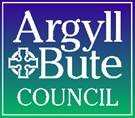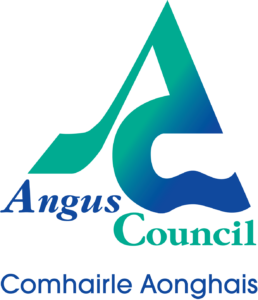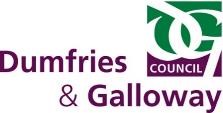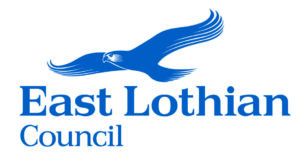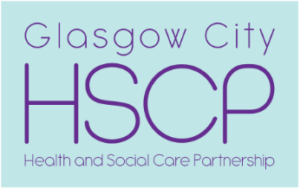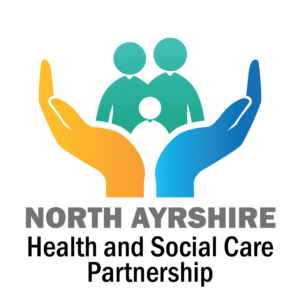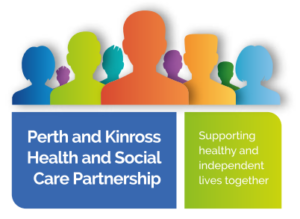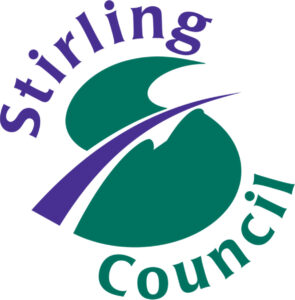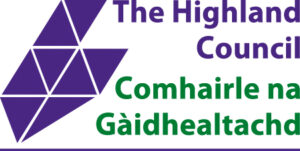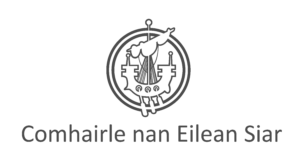Submission From Social Work Scotland, To Uk Home Office Consultation
29.09.2020
Social Work Scotland is the professional body for social work leaders in Scotland, working closely with our partners across the UK to shape policy and practice and improve the quality and experience of social services. We welcome this opportunity to comment on the proposed development of the National Transfer Scheme for unaccompanied asylum-seeking children.
Key points from our response which we wish to emphasise:
- We recognise the need to anticipate the impact of conflict and political instability across the world, which continue to displace vulnerable people within and across borders. Although no one country can resolve this global issue, each country must establish durable, effective mechanisms to support children separated from families. In the UK context, all nations of the UK must cooperate to make that system work.
- The UK Government should work with the Scottish Government, other devolved administrations and local government to ensure the rights and wellbeing of unaccompanied children are protected at all times, both through the process of placement (as facilitated by the NTS) and when in placement. Scotland is moving steadily towards the incorporation of the United Nations Convention on the Rights of the Child (UNCRC) in its domestic law, following important developments by colleagues in Wales to give the convention real weight. Changes to the NTS must be developed in reference to this context, providing for children’s rights to be given full meaning and effect.
- The provision of care for children in Scotland is currently being shaped by the Promise (Independent Care Review, 2020); this will need to be considered in how the NTS will work across the four nations of the UK.
- The Covid-19 pandemic has had profound implications for unaccompanied children. Education has been disrupted, relationships broken, support curtailed. Those in the UK may have avoided the acuity of the impact seen elsewhere, but it is still the case that every aspect of their care has been affected. Responding to the pandemic in Scotland[1] has out of necessity driven concerns about unaccompanied children further into the margins of consideration. And in Scotland, those areas that have been worst hit by Covid-19 (in a numerical sense) have also been in those areas which are the main recipients of unaccompanied children. The pandemic will likely leave a legacy limiting those authorities’ capacity.
- Climate change is likely to influence the scale and pattern of migration in future years, increasing the number of unaccompanied asylum-seeking children.[2] In reforming the NTS, we must take this opportunity to ‘future-proof’ it to expected international developments.
- To a greater extent than in the rest of the UK, material poverty (while not the single cause) is associated with children becoming involved in child protection and alternative care.[3] This creates additional demands on local authorities in Scotland, which in turn impacts their ability to provide support to non-resident children. These national differences within the UK (reflecting the different legal frameworks underpinning care systems) must be taken into account within the NTS.
- It is, as yet, unclear how the UK’s departure from the European Union will impact the numbers of children legally reunited with their families in the UK. If this is restricted, the volume of children who may be smuggled towards the UK and emerge as ‘spontaneous arrivals’ may increase. Agreements between countries of transit and destination are a relevant influence on the flow of demand for placements of unaccompanied minors.
- The children placed through the NTS have, in many instances, experienced discrimination, racism, material hardship, opportunist exploitation, neglect and abuse. In the context of Covid-19, such adverse experiences have been exacerbated. But at the same time, we have seen extraordinary courage, talent, achievement, resilience and contribution of this group of children, and the willingness of communities, carers, social workers and schools to support them. Never have so many children needed physical and emotional ‘shelter’ and protection of their rights. We share the Scottish Government’s positive approach to refugees and seek to see it reflected in the design and delivery of the NTS.
What is your feedback on the proposal outlined in Annex A?
- a) We acknowledge the need to devise a robust UK scheme that will increase the speed and certainty of transfers, ensuring that children are secured and cared for in a sustainable placement as quickly as possible. Central to the scheme must be children’s rights (as articulated in the UNCRC) and informed assessment of what would best meet the individual child’s needs in the immediate, short and longer term. The provision of supportive, meaningful relationships is key and will provide for better outcomes, security and safety for children.
- b) We agree that the model needs to be flexible so that input values can be amended on the basis of closely monitored figures.
- c) We recognise that a more equitable distribution of UASC throughout the UK is necessary because of the disproportionate pressure on some local authorities. However, in determining the capacity of authorities a range of metrics should be used, including the number of children supported who are of uncertain immigration status.
- d) We agree that it would be inequitable and unsustainable if a voluntary scheme had participation from some but not all local authorities, and if those authorities who committed to the scheme bore the burden exclusively.
- e) If the child’s rights and best interests are paramount, some local authority areas are less likely to be able to provide secure, sustainable placements; because of, for example, rural and island isolation; differentials in the looked after population and poverty pressure; dislocation of unaccompanied children from potential cultural connections. Bearing this in mind we support the adoption of a non-mandated UK approach, in which the four nations of the UK are represented as such within the organisation and coordination of a UK wide scheme. Scotland as a whole (and as one region within the proposal) has very limited specialist service provision for UASC, and what it does have is largely centralised in a few local authority areas (including specialist medical care, translation services, refugee/UASC support services, transport links and/infrastructure to support claims to remain in the UK, etc. There are areas of the country which do not host diverse faiths or communities, both of which may be critical to promote a child’s development and the stability of the placement.
- f) We acknowledge that current responsibility for undertaking age assessments lies where the age of a child is disputed; and that current UASC should be accepted as being under 18 years of age or treated as being under 18 years of age until further assessment of their age has been completed. We agree that, in general, the receiving local authority should normally conduct the age assessment. However, there may be cases where it is appropriate for the entry local authority to conduct the case law compliant age assessment before the transfer has been agreed upon. We, therefore, recommend that the criteria for pursuing age assessment in the arrival local authority should be agreed upon and defined.
- g) To note. We are aware that currently age assessments are being completed in Liverpool for children subsequently transferred to Glasgow. Scotland has reviewed age assessment good practice and published guidance (Scottish Government 2018: https://www.gov.scot/publications/age-assessment-practice-guidance-scotland-good-practice-guidance-support-social/)
- h) We agree with the proposed change so that the entry authority enables the transfer journey. In many instances, their staff will have some relationship with the child. We suggest that this section be amended to state that transport costs and arrangements should be the responsibility of the entry authority; within the parameters of the NTS, the UK Government should look at how entry authorities are supported with such costs.
- i) We agree that planning and communication between arrival and receiving local authorities will be vital and that this will need to take place in a timely fashion to avoid delays. Therefore, a detailed protocol for co-ordination of these processes, including a description of roles and responsibilities of staff, should be set out to ensure a common understanding of collaborative arrangements.
- j) Such protocols should integrate consideration of child and adult protection processes where a child is considered at ongoing risk of significant harm.
2a. It remains our clear preference that participation in the NTS is on a voluntary basis. How likely is it that your local authority would participate in a rota based NTS as outlined in Annex A?
To note: Social Work Scotland does not represent a region or a local authority and does not take operational decisions. Social Work Scotland provides a voice for those in leadership roles in social work in Scotland, including Chief Social Work Officers, Heads of Service and service leads or managers. Our answer is given in that context, on the basis of input from our members.
Social Work Scotland supports the introduction of a non-mandatory scheme. Our members have expressed a willingness to participate, albeit in a scheme that is child-centred, flexible and conscious of local conditions. Not all local authorities are the same.
For a voluntary-based NTS scheme to work in Scotland (although this would apply to a regulation / mandated scheme too) it will require a partnership between Scottish Government and Scottish local authorities, working together through a Scottish coordinator who liaises with the national organisation. This would require a degree of commitment to collaboration from local partnerships in Scotland that has not so far been possible or expected. This appears to be an opportunity to seek the development of a Scottish framework to support NTS implementation in Scotland, which lays out what funding and support is available and what additional investment in the support infrastructure nationally will be – e.g. translation services; Home Office locations; specialist trauma support services, etc. Whilst immigration and asylum are reserved matters, the delivery of services to meet the needs of children is devolved. The construction, management and resourcing of the NTS must reflect that.
2b. If unlikely, please explain why not and what barriers to participation remain.
- a) The current UK Government financial support for unaccompanied children does not cover costs associated with looking after children in Scotland, at any age or stage, or in any form of placement. It is inadequate. Costs are especially high for residential units and these provide the majority of UASC placements, in the absence of sufficient numbers of appropriate foster placements.
- b) One part of the funding stress relates to the reduction of funding to £240 per week from aged 18, regardless of asylum status (which is still usually unresolved by this time). Local authorities in Scotland continue to accommodate these young people, in line with Scottish statutory obligations in relation to continuing and aftercare support. These young people are not eligible for benefits. All support costs, therefore, fall on the local authority.
- c) There is already a substantial challenge in sustaining a sufficient body of high-quality care services for Scottish children (an issue reflected in all nations of the UK). This issue is often felt acutely in cities; local authority areas which accept the most unaccompanied children.
- d) Currently UASC usually have to travel to Glasgow to take forward asylum claims. This is stressful and disruptive, undermining placements and limiting the scope of viable local authorities which can provide support. We urge the Home Office to review this process and provide more flexible child-centred options.
- e) National support for the recruitment of appropriate foster families, and the development of appropriate supported accommodation is needed. This is not on a great scale given current estimates, but must be built, alongside the other features of legal, educational, health and cultural support that are required.
- f) Unaccompanied children supported by the Independent Child Trafficking Guardian Scheme in Scotland have offered comments in the last few days to inform our response, providing insight into their perspectives and experiences. These are some extracted quotes:
“Oban is quite small, it was fine for a small town, but I wanted to learn
English and there was no college. It was not easy to make friends because of the language barrier. They helped me as much as they could and I went to school 2 or 3 days a week.”
“My social worker and my guardian helped me to move. It took me about 2 or 3 months. Being in Glasgow was totally different, it was so busy. I could go to school every day, I had more friends. I came to the group at Guardianship every two weeks and I met lots of other people and made friends.”
“Before I moved to Glasgow, I also moved to D (small town ) for 7 months. I was volunteering and I lived with a lady. She helped me to find volunteering in a charity shop. I had a good experience, it was good for me. I was also volunteering in a nursing home – it is good for young people to do things like this. For me, I had problems before I came here. I had bad experiences and couldn’t trust people. I feel more caring and more love for life now, I feel more positive. I feel good about myself and the other things in my life. I feel like I built more trust in people after the bad experiences back home.”
“A lot of people helped me in (a large town in the northeast of Scotland) and in (another small town in the northeast) and Glasgow. A social worker and (independent Guardian). I spent 5 months in an Academy. I was the only refugee there – everyone else was Scottish. I was the only person learning English there.”
“I had everything I needed, clothes and a house, and I went to school.
But it was difficult because no one was really like me. I made some friends but it was difficult because I couldn’t speak English.”
“I couldn’t understand people. But there are people like me in Glasgow.
Refugees from all different countries. I could go to college. This is why I moved to Glasgow. I moved into student accommodation straight away and started college.”
“It took about 5 months – to meet different people.”
“It’s difficult to talk to people, to make friends who are Scottish. In Glasgow, I have been a part of the Befriending at Guardianship. This really helped with my English”
3. Should efforts to increase participation on a voluntary basis fail, it may be necessary to exercise the provisions of the Immigration Act 2016 to mandate transfers under the NTS.
This could operate either as a permanent replacement to the voluntary NTS as the primary mechanism for transfers or deployed only when required by exceptional circumstances. While a mandatory scheme is not our preference, we would be grateful for your views on a potential mandatory approach to transfers if participation in the voluntary scheme does not achieve a more equal distribution of UASC?
We are concerned that a mandatory scheme could lead to rigid expectations and the forcing of placements on areas that are not appropriate at a certain time, or sustainable in a child’s interests because of the degree of separation from other individuals or from cultural connections.
We believe in the advantages of a collaborative UK system with regional and national co-ordinators, allowing for the possibility that a nation/region run at a deficit or surplus relative to a commitment over each quarter, but that there would be an expectation that this would be redressed with financial sanctions.
In Scotland, some areas have little or no history of taking UASC, and no strategic plan to develop any capacity. These areas have been focused on meeting the demand for foster placements and supported accommodation among UK-born children. Whilst there is no doubt a potential and willingness to develop capacity for UASC, this is likely to occur step by step and at a varying pace, reflective of local conditions and pressures. Currently, Glasgow has been the hub of provision and expertise, supported significantly by Edinburgh, Dundee and some other authorities in the central belt. Some smaller local authorities, such as Perth and Kinross, have shown successful initiatives in accommodating small groups of unaccompanied children.
4. The threshold at which a Local Authority can make referrals to the NTS is currently reached when it is supporting UASC at, or above, 0.07% of their general child population.
This threshold is also used to determine the rate for additional Home Office funding to Local Authorities for UASC in their care.
What are your views on the current threshold? For example, should the 0.07% also include the number of former UASC care leavers within a local authority or be adjusted in some other way?
We note that the primary weighting factor is the region’s child population set against the national average. Regions with greater child populations will be asked to place a greater number of UASC and a secondary factor is an inverse weighting of supported asylum population. Regions with larger proportions of asylum seekers supported under s95 and s4 of the Immigration Act 1999 will be asked to place fewer UASC. We feel this method is unsatisfactory, and we very much welcome the statement that this calculation would be kept under review.
It has been acknowledged within the consultation/proposal that no modelling can provide complete certainty to the flow of UASC placements via the NTS. The report states that previously placements available through the NTS have been prioritised for children arriving from overseas under both Section 67 of the Immigration Act (Dubs Amendment) and what was the Vulnerable Children’s Resettlement Scheme. Future need for placements from children from overseas would be fed into the National Rota alongside those arriving spontaneously, and therefore there is a significant degree of uncertainty in committing to an NTS rota scheme
We note and agree that the Scheme should allow for the possibility that weighting at the ‘regional’ level could take into account other factors such as Looked After Children numbers and other local factors. Having a ‘greater child population’ also intersects in some areas with having a greater incidence of child poverty. Potential local capacity will be relative to interactive population stresses including health, housing, employment and access to public transport and services.
We also recommend that at the country level the implication of legal variations should be taken into account – for example, the cost differentials relating to the implications of Section 67 of The Children and Young People (Scotland) Act 2014, which inserted a new section 26A into the Children (Scotland) Act. From April 2015, a young person born after 1 April 1999 who is looked after in foster, kinship or residential care is eligible to remain in their current care placement until they turn 21. This is called Continuing Care. If the placement cannot be maintained, or if it is in the young person’s best interests to start an alternative placement, a welfare assessment must be provided showing why staying in their current placement would significantly adversely affect their wellbeing. Any eligible young person ceasing to be looked after on or after they turn 16 can request Continuing Care. A young person receiving Continuing Care will no longer be defined as ‘looked after’ but will continue to receive the same support. When Continuing Care ends the young person is then eligible for Aftercare support until they turn 26.
In Scotland, although Glasgow is at and beyond their capacity to take UASC and have been creative in developing and sharing their experience more widely, the probability is that Scotland will continue to look to Glasgow disproportionately for resource and social work insight. Some UASC gravitate thereafter placement in other authorities because of contacts and cultural/ religious opportunities to connect. Part of the solution to more equitable distribution of opportunities for the provision of a home base lies in the strategic effort put into making local solutions safe, secure, welcoming and connected to sources of support and cultural identity. We acknowledge this is significantly a local responsibility but national collaboration is necessary.
Predictive analysis of distinct types of need with the UASC population is also necessary. There is a need for a Scotland wide strategy and framework to support the development of the necessary infrastructure to enable NTS implementation – based on a needs analysis and mapping of infrastructure. We need to have a clear rationale for the development of services and sourcing of placements looking at the risks and advantages of a national; regional or LA level approach to acceptance and meeting the needs of UASC.
5. Who do you think is best placed to run a voluntary rota based NTS? The Home Office (as now) or someone else? Please give details.
We agree that there needs to be central governance of the National Transfer Scheme and acknowledge that is currently led by the Department for Education and the Home Office and includes local government representation. Scotland, Wales and Northern Ireland should be represented as countries and not as ‘regions’, in order for the distinctive legal, political, economic and social contexts to be accurately represented and understood in all monitoring, planning and review of arrangements.
Separately, but feeding into NTS Scheme from Scotland, Scottish negotiations, information and advice should be gathered, analysed and taken into account from the Scottish Government, the Convention of Scottish Local Authorities (COSLA) and Society of Local Authority Chief Executives (SOLACE) and stakeholders such as children’s rights organisations/ Children and Young Persons Commissioner; the Independent Child Trafficking Guardians Scheme; and independent legal perspectives such as that of Just Right Scotland; and with UASC themselves.
Social Work Scotland recognises that although some local areas may feel a long way from the issues relating to the needs of UASC arriving in the south-east of England, no country, region, city, or island can be insular in relation to these children’s rights and best interests. There is a collective responsibility, and realising this responsibility will require collective representation and leadership. Within Scotland there may be options for creative collaboration between local areas, pooling resources and learning. That collaboration will be best served by a voluntary scheme, with people ‘buying in’, rather than being forced to the table. The UK government, in partnership with the devolved governments, will need to support effective collaboration through additional investment, data and monitoring, etc.
6. Do you have any other suggestions on how the NTS could be improved?
We note plans for the evolution of the current Cases of Concern protocol, which is currently intended primarily to address concerns that arise prior to transfer. The consultation report acknowledges that there may be cases where a transfer has taken place and concerns arise that: a) The information provided by the entry authority was incorrect and that this would have affected the basis for the transfer – e.g. that they had family members living in the entry authority; or b) The safety and welfare of the child has been seriously affected and that this is attributable to the decision to transfer, including concerns regarding their physical or mental health.
The report speaks of a mechanism to review and potentially reverse the transfer. If this is developed, the welfare and best interests of each child should be the paramount consideration. Therefore, a protocol is needed to ensure that this is a coordinated and child-centred process and not simply a rebound mechanism. Holistic, multi-agency assessment and protective care planning for the child would be necessary to ensure that a child does not fall between fractured systems, held in a series of temporary placements, with no consistency of understanding and advocacy prior to the location of a settled solution.
For further information, please do not hesitate to contact:
James Cox
Children and Families Lead, Social Work Scotland
james.cox@socialworkscotland.org
[1] https://www.gov.scot/publications/coronavirus-covid-19-daily-data-for-scotland/
[2] International Organisation for Migration, 2020
[3] Bywaters/Nuffield, 2017



